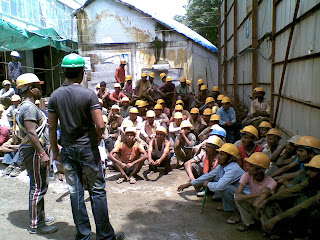Fixing of marble panels
Cement slurry shall be poured within the gap between tiles and plaster, this is to ensure that there is no void left between tiles and plaster surface.
Sand mixed with dust particles is sprinkled over applied adhesive on the rear side of marble panel, this is wrong practice as panel will not get proper bondage strength. Using clean 20mm cubical aggregates will get satisfactory bondage strength.
.jpg)
.jpg)


%5B1%5D.jpg)
%5B1%5D.jpg)


.jpg)

.jpg)
-734130.jpg)
.jpg)
.jpg)

.jpg)
